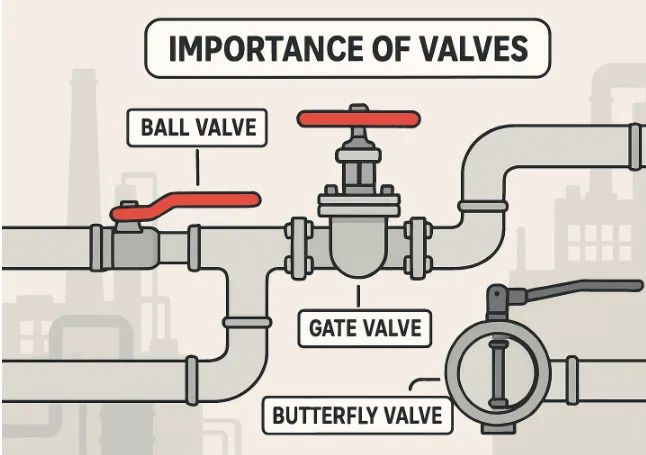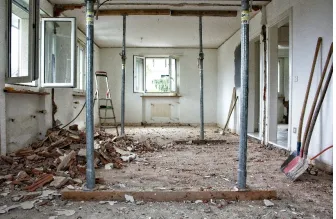Streamlining Operations: Importance of Reliable Valves and Piping Systems
In today’s demanding industrial landscape, the smooth operation of any facility hinges on the quality and integrity of its valves and piping networks. These often-overlooked yet essential components act as the arteries and control points of countless processes, managing everything from chemical transfers to steam distribution. When valves and piping systems are neglected or substandard, even the most sophisticated setup can grind to a halt, jeopardizing output and profitability.
Also Read: The Key to Reliable Heating During the Coldest Months
Every industrial process depends on seamless fluid control for productivity and compliance. Modern facilities need systems that handle harsh chemicals, extreme temperatures, and vibration. Investing in durable valves and piping improves safety, compliance, and product consistency. Industries prefer specialized suppliers over generic components that may not meet standards. Reliable systems prompt organizations to assess maintenance, suppliers, and technologies. Maintaining high-quality flow infrastructure is strategic amid energy, emissions, and cost pressures. Failures can cause fines, damage, or injury, making proactive management vital. This article covers how reliable valves and pipes influence efficiency, the importance of selecting proper components, advances in materials and technology, and maintenance strategies to extend infrastructure life. It offers insights for leaders, engineers, and maintenance staff to future-proof facilities and create value.
The Role of Valves in Industrial Systems
Valves serve as control points in industrial piping systems, responsible for starting, stopping, or adjusting the flow of fluids and gases. Their designs and materials depend heavily on their specific use. For example, gate valves provide little resistance when fully open, ideal for straight-line flow, while ball and butterfly valves are designed for quick shutoff and flow control. Choosing the correct valve type based on pressure, temperature, fluid chemistry, and flow rate is essential for ensuring reliable operation and reducing maintenance needs.
Incorrect valve choices can trigger cascading failures, operational bottlenecks, and increased safety hazards. Consequently, facilities highly benefit from skilled assessment of system requirements during both the design phase and ongoing operational reviews. The latest industry reports from resources highlight a shift toward custom-engineered solutions and advanced valve materials that address changing industrial needs.
The Importance of Regular Maintenance
Neglecting routine maintenance is a major cause of failures in valves and piping systems. Regular inspections enable operators to identify leaks, blockages, wear, and corrosion early, before they worsen. This is especially important in industries with highly corrosive fluids or fluctuating demands, where early intervention is vital to prevent catastrophic shutdowns. Preventive maintenance is significantly less costly and disruptive than emergency repairs or entire system replacements. Companies that implement and adhere to a rigorous replacement schedule often see notable reductions in both downtime and total ownership costs.
Effective maintenance programs depend on skilled personnel, comprehensive documentation, and routine testing of key components such as valve seals, actuators, and supports. Implementing digital technologies—such as maintenance management software and remote monitoring—enables early failure detection before physical issues appear, leading to better resource allocation and enhanced system reliability.
Advancements in Valve Design
The last decade has witnessed significant advancements in valve technology, designed to cope with higher demands for performance and resilience. The adoption of composite materials, including ceramic linings and high-performance alloys, has dramatically improved resistance to corrosion, abrasion, and high pressure. These innovations not only reduce the frequency of breakdowns but also shrink maintenance budgets and prolong the operational life of critical infrastructure.
Smart valve technology is transforming maintenance and operational practices by enabling real-time monitoring and predictive diagnostics. Sensors embedded in valves and pipes relay performance data to control rooms, flagging early warning signs of wear, misalignment, or leaks. This Internet-of-Things-based approach empowers facilities to shift from reactive to predictive maintenance, reducing unplanned outages and optimizing spare parts inventory.
Impact on Operational Efficiency
Reliable valves and piping systems are foundational to efficient and safe operations. Robust systems ensure steady flow rates, consistent pressures, and optimal process control, all of which are vital for quality assurance and energy management. When valves perform as intended, they safeguard against product loss, contamination, and process interruptions—helping businesses remain competitive and compliant.
Conversely, malfunctioning or undersized valves can introduce significant operational risks, resulting in costly downtime, excessive energy use, and damaged assets. Beyond the direct costs, secondary impacts such as regulatory penalties and reputational harm can be even more damaging. For businesses seeking to enhance safety, mitigate operational risks, and minimize costly downtime, selecting reliable equipment and trusted partners, such as Cruco Mill & Industrial Supply feed mill suppliers, is crucial. According to Delphi Fittings, forward-thinking companies are increasingly leveraging technology upgrades and best practices in maintenance to realize measurable improvements in operational worker safety, maintenance, and overall profitability.
Conclusion
Achieving streamlined and profitable industrial operations starts with a deep commitment to the reliability and suitability of every valve and pipe within a system. The right supplier, materials, and ongoing care dramatically reduce unplanned halts, safety incidents, and repair costs. By focusing on strategic component selection, embracing the latest technological advancements, and enacting robust maintenance protocols, companies can create resilient processes that thrive even under demanding conditions. Investing in these critical infrastructure elements not only protects the bottom line but also supports long-term growth and competitiveness in a rapidly evolving industrial landscape.







